What is Magnetic Particle Testing and Does OSHA or ASME Require It?
Are you looking into having Magnetic Particle Testing done on the rigging gear in your facility? Before committing time and money toward this process, we’re here to help you learn more about…
As an operations manager or safety manager, you’re always looking to make safer lifts on our jobsites, and have heard good things about magnetic particle testing.
By conducting inspections or having them done by a third-party rigging company, you’re taking the first steps to reducing risks of equipment failure and serious damage to/loss of life and property. However, you still aren’t sure if that’s enough.
In this article, we’ll help you figure out if this magnetic particle testing is something you can benefit from by answering the following questions:
- What is magnetic particle testing?
- Is it testing required by OSHA or ASME?
- When does a magnetic particle test work best?
- What are some other forms of non-destructive testing?
- Where does the testing take place?
- Where can I learn more?
What Is Magnetic Particle Testing?
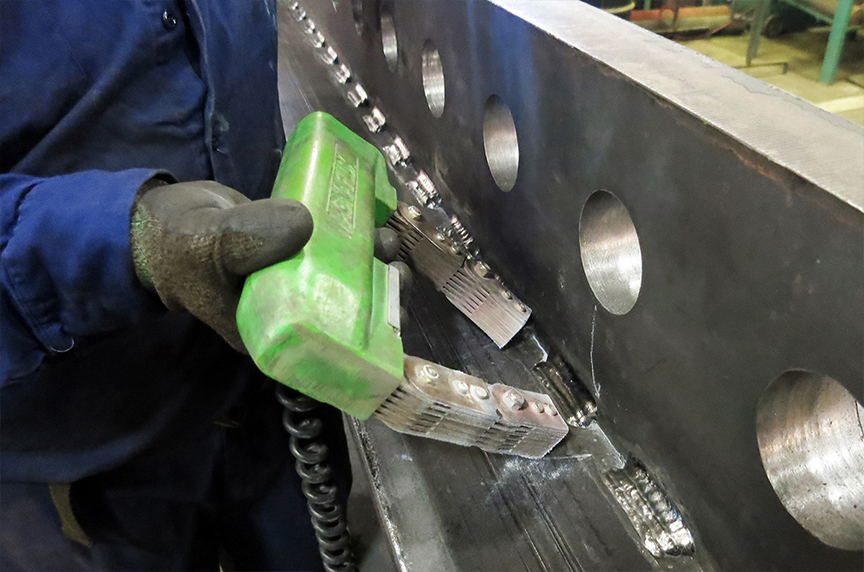
Magnetic particle testing is a form of NDT (non-destructive testing). It’s where a magnetic field is introduced into an object using a dust.
If done properly, the yield will be what’s known as an “indication” of an issue that could meet removal from service criteria standards.
We’re not a non-destructive test company. We’re a rigging inspection group who has the capability of performing this basic level of NDT.
Magnetic particle testing can be used to possibly identify what could be an indication. Then, further tests are required to make that determination.
It’s limited due to several factors. Items can’t be painted because this is a surface and shallow sub-surface test. Magnetic particle testing can’t penetrate the paint. For this testing to work, the paint must be grinded off.
Example: Think about a spreader beam. They’re painted yellow, but if you need an inspection of the bale, you can’t use magnetic particle testing to examine the equipment.
What’s the Difference Between Magnetic Particle Testing and Visual Inspection?

Let’s use a crane hook for example.
With a crane hook, there’s nothing saying you should have your hooks NDT tested. A basic visual inspection before use is what’s required by the Occupational Safety and Health Administration (OSHA) or American Society of Mechanical Engineers (ASME).
However, it’s not a bad complement to a visual inspection. We’ve found that a lot times, a crane hook will experience a wear called mushrooming. This happens when material is worn down and pushed off to the sides of the hook.
When that happens, that wear creates what’s called a stress riser. The stress riser would be the most likely place for a crack to form.
Bad Fits Applications
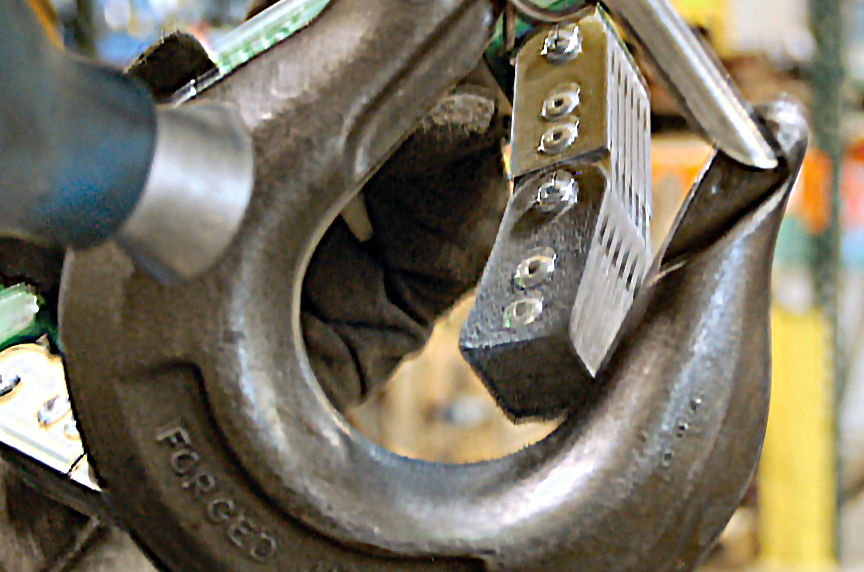
Other places that may not be a good fit for this form of testing include arch beams.
Our Crane Services team has found tracks to be time-consuming places to do magnetic particle testing because:
- All paint must be grinded off
- Every square inch of the track must be tested
Remember, you’re only getting an indicator of an area that may be weakened. It’s something we do offer, but it’s not easily applicable.
Whenever we get serious inquiries into non-destructive testing, we’ll farm it out to a third-party specialist. A non-destructive testing specialist is generally a metallurgist. They’re engineers, and to be a level-three specialist, it’s a high amount of hours that they have to be supervised by another level-three.
It’s a premium service with different levels to it. The documentation and the way a specialist would do it is really different than we would do. That’s why we do magnetic particle testing at a basic level, applying it to a crane hook, and possibly, on parts of a spreader beam, too.
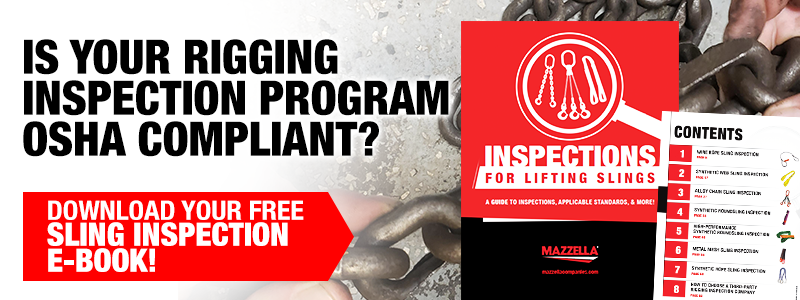
Is Magnetic Particle Testing Required by OSHA or ASME?
Nowhere in OSHA (Occupational Safety and Health Administration) or ASME B30.9 Slings, ASME B30.10 Hooks, ASME B30.20 Below-the-Hook, or ASME B30.26 Rigging Hardware standards does it require you to have non-destructive testing or magnetic particle testing performed on your rigging or overhead lifting equipment.
Since there’s no requirements in industry standards, we’ve found it’s almost always a customer request. We’ve seen companies hire third-party specialists to do more complex tests than necessary when a periodic inspection would’ve been sufficient.
Before ordering a test, you should ask yourself: What would’ve ever happened to the inside of a crane hook over the last 20 years since it was forged?
Unless something happened at the time of manufacture, where it was a poor forging or casting, nothing would start on the inside.
When you’re thinking about non-destructive testing and the different ways of using it, it’s often not needed.
When Does a Magnetic Particle Test Work Best?
While it’s not a fit for all applications, magnetic particle testing is a good option for crane hooks.
Although our specialists have seen a cracked crane hook on rare occasions, they have found cases of mushrooming through magnetic particle testing. You go through the process of cleaning things up and retesting them until you get to a certain point.
It’s a great way to bring you, the customer, peace of mind. If you have 20 crane hooks, we can conduct magnetic particle testing in a small amount of time. If your specialist is conducting the tests the correct way, it’s quick and simple, unless you’re grinding away paint.
Our specialists won’t conduct magnetic particle testing in certain situations because we’re not going to get into doing hot work and permitting.
What Are Some Other Forms of Non-Destructive Testing?
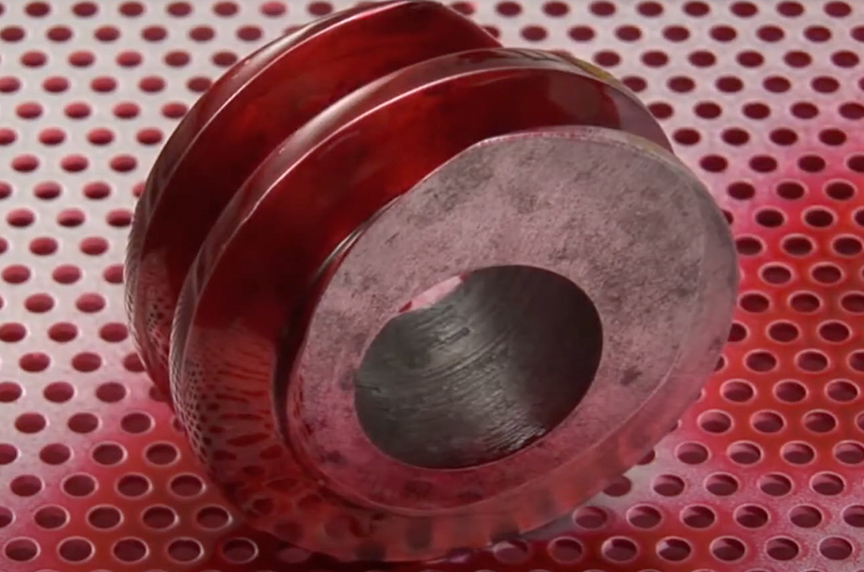
Magnetic particle testing isn’t the only form of non-destructive testing.
Dye-Penetration Testing
We have a rigging inspection specialist who is dye-penetrative certified, and one customer who uses it on a particular piece of rigging equipment.
That is a strict application because it’s temperature controlled, and the item has to be explicitly clean. That’s a multi-step, labor-intensive process. This is a costly process for customers because the kits required to do these tests are very expensive.
Although it’s not always needed, dye-penetration testing gives you peace of mind.
Where Does Magnetic Particle Testing Take Place?
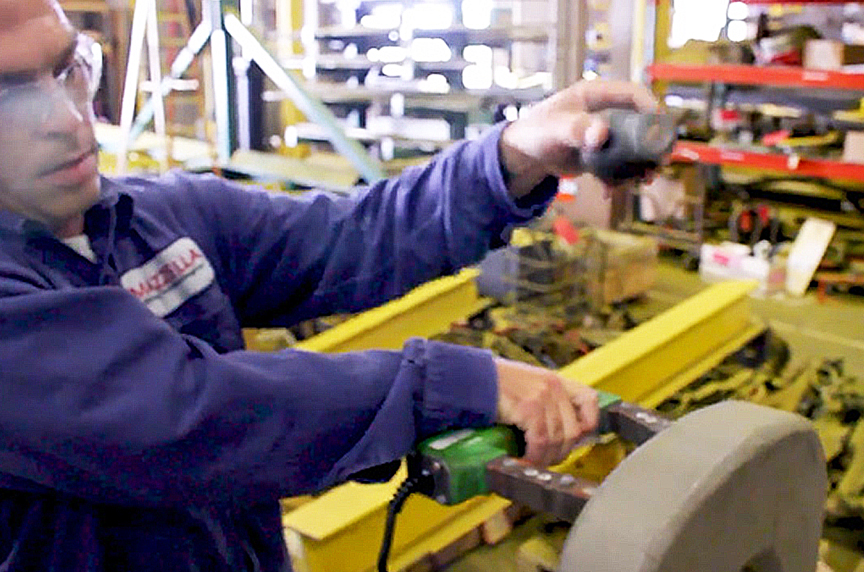
We come to your facility to conduct these tests and understand there could be limitations to what we can do.
Weather can dictate the effectiveness and practicality of using magnetic particle testing. This testing is temperature-dependent. During winter months in colder environments, magnetic particle testing will either:
- Not work at all
- Be very slow in achieving desired results
Something at the right temperature that could take 30 minutes might take three hours in colder environments.
Example: There are capabilities, and sometimes, it makes sense. There are times when will make new below-the-hook products for our customers out of our shop. We had an automotive customer who ordered from us, and magnetic particle testing was a part of the process.
After being proof-tested, the below-the-hook devices had to undergo magnetic particle testing, and that was possible because everything was clean and had been tested. The reason we did that was to check the special heat treating involved on the welds. We had to go back and ensure the welds were done properly.
Where Can I Learn More?
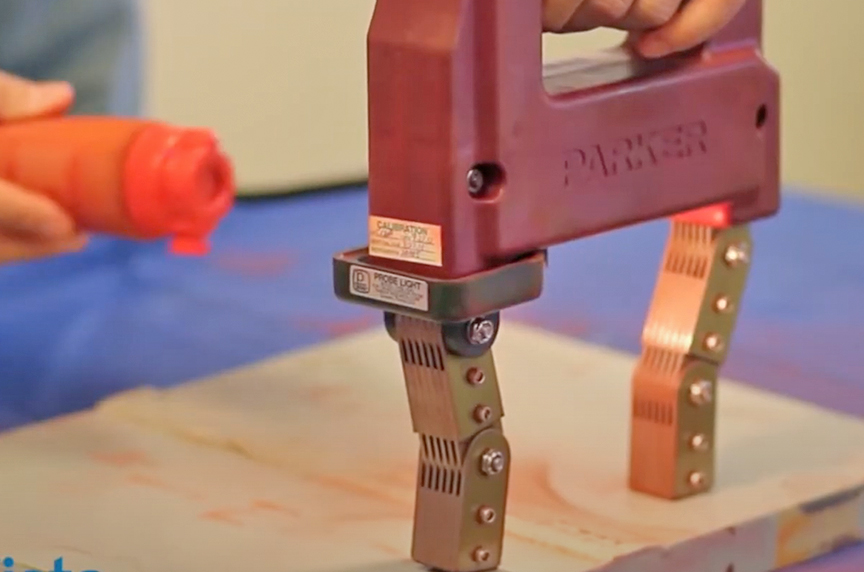
Our specialists suggest you do your research before ordering a magnetic particle test.
There’s a lot of published research from technical organizations that run the standards, as well as the third-party suppliers who conduct the tests.
Also, our specialists are available to help provide you with information on the types of testing available for your equipment.
Cost-Benefit Analysis
Compare using magnetic particle testing on an entire chain sling vs. the cost of buying new rigging gear. If you take a 20’, 1-1/2” four-legged chain sling, the testing and inspection could be done in a couple days.
If we conducted a link-by-link inspection with magnetic particle testing, the process would take significantly longer.
Is Magnetic Particle Testing My Best Option?
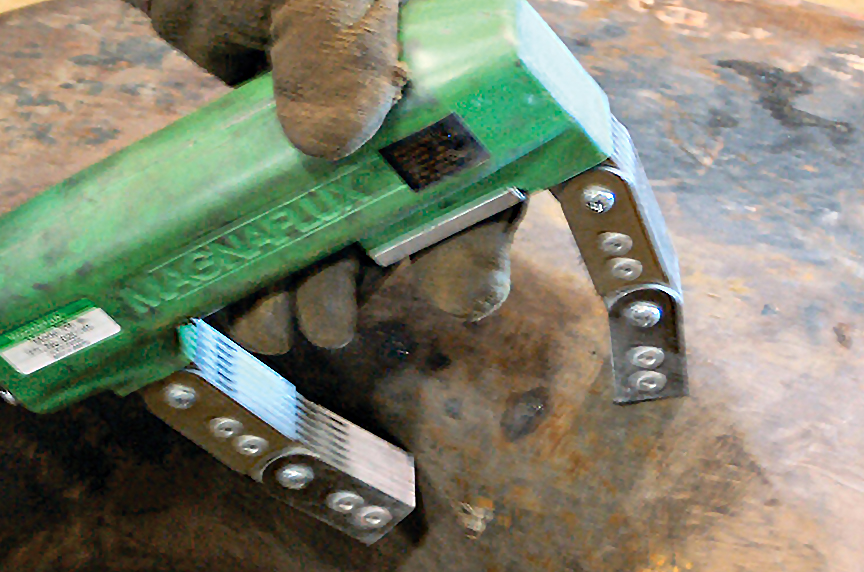
At the end of the day, it comes down to training and inspection.
Magnetic particle testing is a great tool to use, but if you’re looking at crane hooks and inspecting your below-the-hook devices as required by ASME standards before use, you probably don’t need it unless it’s for a very specific application when you know you’re putting unnatural stresses or fatigue on the material.
Magnetic particle testing is misconstrued as being something that’s easy to do. It sounds like you’re going above-and-beyond the requirements, but our specialists want to have a deeper conversation with you. They want you to understand if this service is a good fit, or if there’s a better process to fit your needs.
You may not understand what is needed, and that’s why we’re here. We’ll explain that magnetic particle testing isn’t required, as well as the properties of alloy steel chains. Remember, alloy steel chains are designed to stretch. They’re designed to bend and twist a certain amount to give you that indication.
This service is available for large or small crane hooks, hoist hooks, sheaves, blocks, and below-the-hook lifting devices.
Contact us today to see if this service is a good option for your rigging gear.
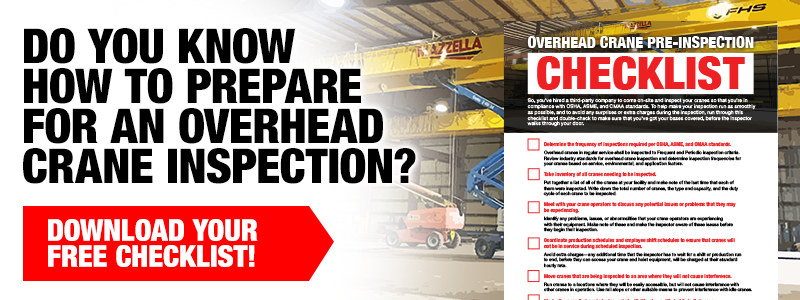

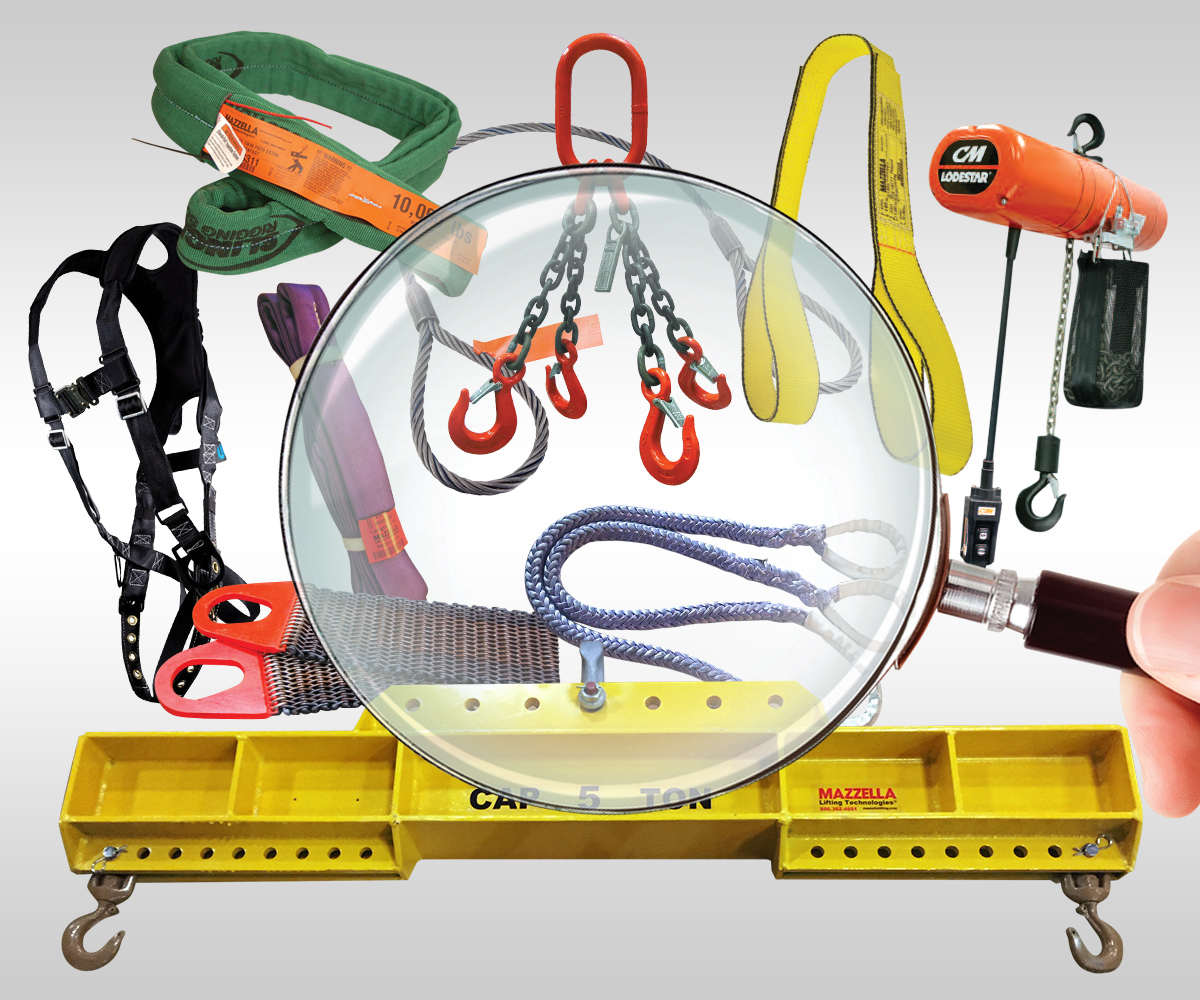
❯ Rigging Inspection Services
OSHA 1910.184, ASME B30.9, B30.20, B30.26, and ANSI Z359 require periodic, documented inspections on slings, rigging hardware, lifting devices, and fall protection every 12 months, at minimum, and monthly to quarterly in more severe service conditions.
Our team of rigging inspectors are certified to make sure your products meet OSHA and ASME requirements.
Copyright 2021. Mazzella Companies.
